10 Most Important Dynasties in China You Should Know
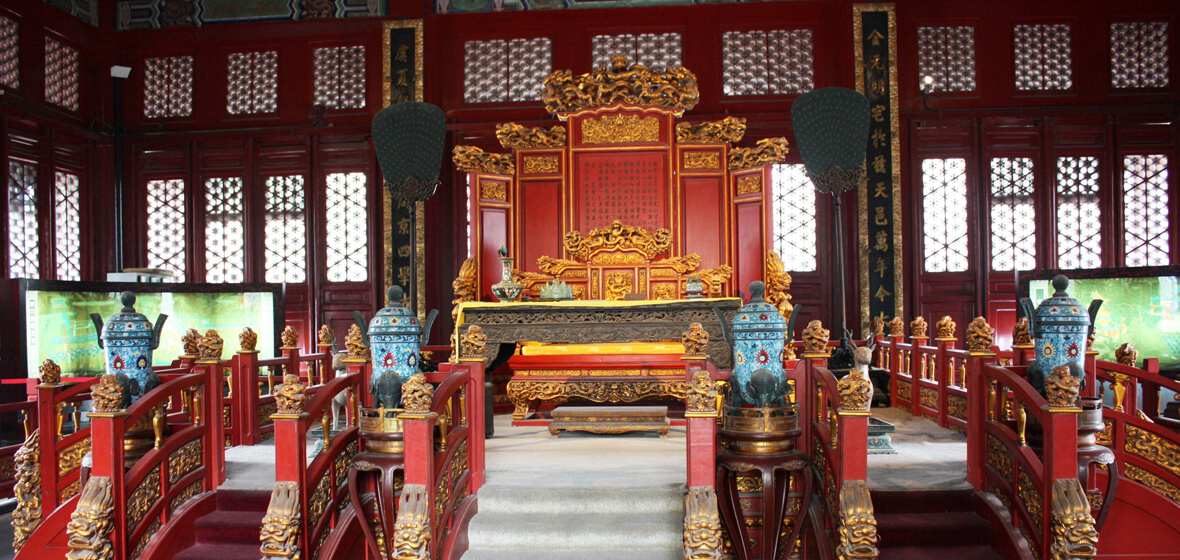
For almost 4,000 years, China was ruled by a series of successive dynasties. In total there were 24 dynasties. It is true that every dynasty contributed something to the formation of the Chinese culture. However, some dynasties had more obvious impacts than others. We have listed 10 of the most important dynasties that the Chinese people often mention when you visit China.
1. Xia Dynasty 夏朝 (C.2070 – C.1600 BCE)
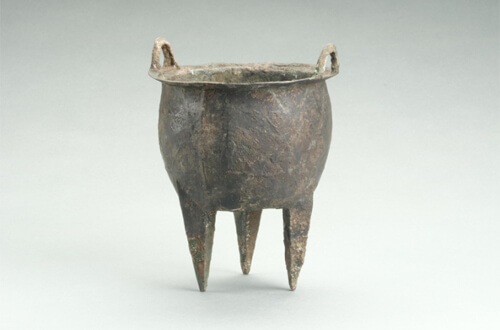
- Capital: Erlitou
-
Major Achievements:
- The first dynasty to irrigate, produce cast bronze, and build a strong army.
- The Calendar was compiled to guide agriculture production.
- Earliest recorded solar eclipse which happened on Oct. 16th 1876 BCE.
- King Yu was the first king to be succeeded by his son instead of a man chosen for his virtue. This made the Xia the first Chinese dynasty.
- What Can We Visit Now:
Erlitou Site Museum of the Xia Capital: The Erlitou site is near Yanshi city in Henan Province. It is thought by some historians and archeologists to have been the capital of the Xia dynasty. Excavations there have revealed palatial buildings, royal tombs, paved roads, and tombs containing musical instruments and bronzes.
2. Shang (also known as Yin) Dynasty 商朝 (1600 – 1046 BCE)
- Capital: Bo (modern day Zhengzhou)/ Anyang
-
Major Achievements:
- The Shang were the first Chinese Dynasty to invent writing and have a recorded history.
- The Shang also developed bronze technology. They did not make normal tools out of bronze, but used bronze for religious items and weapons.
- There were notable advances in the art of Jade carving.
- What Can We Visit Now:

Yin Xu in Anyang: This UNESCO World Heritage Site was the capital of the Shang Dynasty, and it contains numerous impressive archeological finds that help us understand this important period of Chinese history.
National Museum of Chinese Writing in Anyang: Anyang is where the "oracle bones" were discovered which proved that China had a fully-developed system of writing (some 5000 characters) over 3400 years ago. This museum displays some of the ox scapula and tortoise plastrons on which the ancient Shang Kings asked for guidance from Heaven or their ancestors. Besides the bones, there are some superb Zhou bronze ritual vessels which fill in much of the gaps in the absence of written histories.
3. Zhou Dynasty 周朝 (1046–256 BCE)
- Capital: Xi’an / Luoyang
-
Major Achievements:
- The intellectual foundations of Chinese civilization were established during the Eastern Zhou dynasty (770-256 BCE), a period of political fragmentation and moral crisis.
- The Zhou reign of 790 years is the longest in the history of China.
- Chinese characters evolved to form the seal script and later the clerical script during the late Zhou dynasty. It was this clerical script that with time evolved into the modern standard Chinese script.
- It was the golden age of Chinese Philosophy; the schools of Confucianism, Daoism, and legalism developed in this period.
- Iron replaced bronze as the preferred material in weaponry.
- Ox-drawn plows, crossbows, and horseback riding were all introduced; large-scale irrigation and water-control projects were also instituted for the first time, greatly increasing the crop yield of the North China Plain.
- What Can We Visit Now:
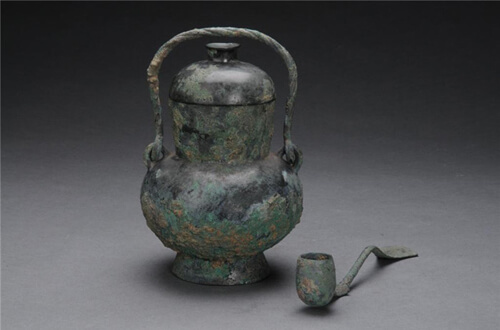
Baoji Zhouyuan Museum: About 100km from Xi’an, this is a special museum built on the basis of large-scale archaeological excavation of the Zhouyuan site where the Zhou ancestors originated. More than 10,000 articles of bronze ware, bone ware, jade ware, pottery, original porcelain, production and living utensils, building materials, and more, are on display in the museum.
Museum of Luoyang Eastern Zhou Royal Horse and Chariot Pits: The exhibition is unique as it shows us the actual carriage that was being used by the emperor of old times with 6 horses (carcasses) attached to it. Apparently, the carriage with the horses was buried together with the emperor as he/she passed on to the afterlife. The number of horses used for the carriage is an indication of the status of the rider. Only the emperor can use 6 horses.
Henan Museum in Zhengzhou:The museum boasts a collection of artifacts discovered across the province, including a particularly good collection of Shang Dynasty and Zhou Dynasty relics. Henan province is located in the north-central region of China. It is known as the cradle of Chinese civilization. It was the country's political, economic and cultural center for over 3000 years.
4. Qin Dynasty (221 – 207 BCE)
- Capital: Xianyang (modern day Xi’an)
-
Major Achievements:
- Unification of China for the first time.
- Reorganized the bureaucracy, abolishing the existing nobility and replacing them with his appointed officials.
- Simplified the written Chinese script, standardized weights and measures, and minted new copper coins.
- The development of roads and canals also created better connectivity between major trading regions.
- What Can We Visit Now:
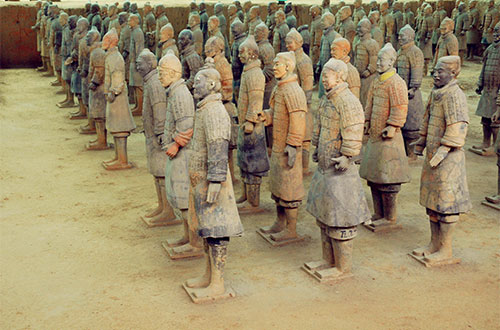
Terra Cotta Warriors in Xi’an: Thousands of sculptures of horses and warriors in full armor standing in battle formation were found in the tomb of Qin Shi Huang. The warriors are life-size, with most about two-meters (six-feet) tall. This site is about 50km from city center of Xi’an.
5. Han Dynasty 汉朝 (202 BCE–220 CE)
- Capital: Chang’an (modern day Xi’an)
-
Major Achievements:
- The standard paper-making process was invented by Cai Lun.
- The famous Silk Road was established. It allowed trade with the west, flourishing of commerce, importing of foreign goods, and introducing exports.
- The world’s first water-powered armillary sphere to assist astronomical observation was invented by Zhang Heng.
- Confucianism was officially adopted as the state ideology of the Han dynasty. An Imperial Academy was established in 124 BCE for scholars to study in depth the Confucian Classics.
- Universal conscription was abolished and professional army was established.
- What Can We Visit Now:
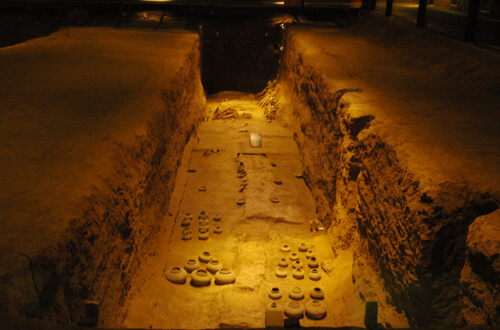
Hanyangling Mausoleum in Xi’an: This is a magnificent and abundant cultural relic, comprising the emperor's tomb, empress' tomb, the south and north burial pits, ceremonial site, human sacrifice graveyard and criminals' cemetery. You’ll walk right on top of the exhibit; you will see all the way to the bottom and learn how these army figurines differ from the world-famous Qin Terracotta Warriors.
The Great Wall of Han Dynasty in Dunhuang: This part of the Great Wall is constructed quite differently. It was built from a mixture of sand, dry dirt, rose willow, reeds and apocynum.
Haihunhou Heritage Park in Nanchang: Located in Nanchang, which is in East China’s Jiangxi Province. About 10,000 cultural relics, including gold, bronze and jade artifacts, have been unearthed from the tomb of Liu He. It the best-preserved royal tomb of the Western Han dynasty ever discovered in China. Liu was the grandson of Emperor Wu. Liu was given the title "Haihunhou" (Marquis of Haihun) after he was deposed as emperor after only 27 days, dethroned by the royal clan because of his lack of talent and morals.
6. Tang Dynasty 唐朝 (618–907 CE)
- Capital: Chang’an (modern day Xi’an)
-
Major Achievements:
- The imperial examination was a civil service examination system in Imperial China to select candidates for the state bureaucracy.
- The Tang period was a golden age of Chinese literature. Apart from poetry, short stories and tales were popular.
- The study of medicine is one of the highest contributions of the Tang Dynasty as it is now practiced worldwide. The illustration of using herbs or organic materials for medicine was developed and spread by this empire.
- The study of complex chemicals to create gunpowder was also one of the Tang Dynasty contributions.
- Woodblock printing was developed in the early Tang era with examples of its development dating to around 650 CE.
- What Can We Visit Now:
Big Wild Goose Pagoda in Xi’an:This stone pagoda structure is called the Great Wild Goose Pagoda, and is enclosed within the Ci’en (Temple of Mercy) monastery in present-day Xi’an. It was erected in 652 to commemorate the return of the temple’s monk, Xuanzang, who was a scholar, traveler, translator and a famous Buddhist monk during The Tang Dynasty.
Sui and Tang Luoyang City National Heritage Park in Luoyang: Empress Wu Zetian, who reigned from 690-705 CE. During her political heyday, two of the grandest architectural wonders known as Tian Tang (Heavenly Hall) and Ming Tang (Hall of Enlightenment) were built as symbols of splendor and opulence. The former was intended for meetings with government officials, while the latter was designated for religious ceremonies.
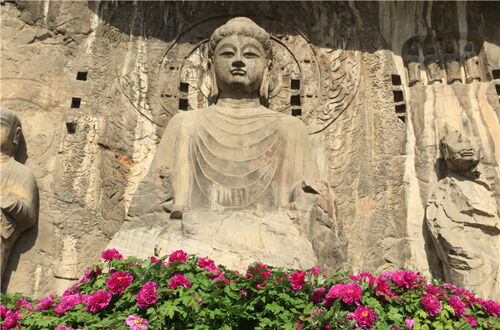
Longmen Grottoes in Luoyang:Most of the carvings at the Longmen site date between the end of the 5th century and the middle of the 8th century – the periods of the Northern Wei (386 –534 CE) through early Tang dynasties (618–907 CE). In fact, the face of the largest Buddha statue (Vairocana Buddha) is supposedly based on Tang Dynasty Empress Wuzetian’s face.
7. Song Dynasty 宋朝 (960 – 1279 CE)
- Capital: Kaifeng /Hangzhou
-
Major Achievements:
- The Song Dynasty was a time of breakthroughs in science and technology. The development of new irrigation systems and the introduction of new varieties of rice, such as early ripening and drought-resistant strains helped to increase agricultural production, which contributed to the population boom and prosperity of the Song era.
- The world’s first movable type printing press was invented during the Song Dynasty.
- Gunpowder was first used in warfare, in weapons such as the fire lance and fire arrow.
- First use of government-issued paper currency in world history happened during this time.
- The magnetic compass was used for navigation. This tool contributed to the growth of maritime trade.
- What Can We Visit Now:
Millennium City Park in Kaifeng: This is a Chinese cultural theme park showing a variety of activities and historical events from the Song dynasty that had its capital in Kaifeng.

The Iron Pagoda in Kaifeng:The pagoda is so-named not because it is made of iron, but its color resembles that of iron. It is a brick pagoda tower and has survived through 37 earthquakes, 18 strong winds and 15 floods over more than 900 years.
The Southern Song Dynasty Deshou Palace Site Museum in Hangzhou: Also known as Southern Song Dynasty Deshou Palace Ruins Museum. Comprising of over 10 halls and courtyards, including the Deshou, Houdian and Lingzhi halls, the Deshou Palace was believed to have once boasted many exquisite landscaped gardens, comparable to those in the Imperial city.
8. Yuan Dynasty 元朝 (1271–1368 CE)
- Capital: Dadu (modern day Beijing)
-
Major Achievements:
- The Pax Mongolica, Latin for “Mongol peace”, ushered in an era of stability and commerce that successfully connected Europe and East Asia.
- There was also the development of a new form of Chinese pottery created under the Yuan Dynasty noted for its distinct blue and white coloring and design.
- Also of note during the Yuan Dynasty was the development of landscape art, where beautiful scenes of Chinese natural life were portrayed with depth and scope so as to depict natural life through the painter's own view.
- Chinese doctor Hu Sihui wrote his book called 'Important Principles of Food and Drink' which is the first medical text on just which diseases were caused by certain nutrient deficiencies in the world.
- In astronomy, Guo Shoujing created his new calendar that is only 26 seconds different than the calendar we use today.
- The Yuan rule saw the rise of the novel as a major literary form in China. A new form of regional music drama also grew during this time that was termed as 'Yuan drama'. These were popular songs that were used for popular entertainment. Vernacular fiction also became popular as famous dramatists would write romantic plays.
- What Can We Visit Now:
Yuan Dadu City Wall Ruins Park in Beijing: The city wall was constructed in 1267 and finished in 1276. It was abandoned in the Ming dynasty when Beijing was rebuilt and shifted slightly to the south.

Xanadu: Xanadu (aka Shangdu, Shang-tu, and Kaiping), located in Inner Mongolia, northern China, was made firstly the capital (1263-1273 CE) and then the summer capital (1274-1364) of the Mongol Empire by Kublai Khan (r. 1260-1294 CE). Xanadu received lasting fame in the western world thanks to the Venetian explorer Marco Polo’s description of it in his celebrated book Travels (c. 1298 CE). Although only ruins remain today of the city, it is listed by UNESCO as a World Heritage Site.
9. Ming Dynasty 明朝 (1368–1644 CE)
- Capital: Nanjing/Beijing
-
Major Achievements:
- The repair and completion of the Great Wall and restoration of Grand Canal during the Ming era is marked as one of the biggest achievements in the field of engineering.
- China’s greatest naval explorer Zheng He sailed his treasure fleets as far as East Africa.
- Advancement in military technology led to the invention of powerful artillery and the Huochong gun, a projection firearm.
- A herbal medicine book named Compendium of Materia Medica advanced knowledge in the field of medicine.
- The blue and white porcelain flourished in the Ming era.
- Jade and bamboo carvings led to the prosperous development of handicrafts and arts during that time. China became famous for its handicrafts, printing and silk and cotton weaving.
- Some of the famous Chinese literature works like Journey to the West and Outlaws of the Marsh were produced during the Ming Dynasty.
- What Can We Visit Now:
Forbidden City in Beijing:It was constructed during the reign of the emperor Yongle from 1406 to 1420. The complex was declared a World Heritage Site in 1987, listed by UNESCO as holding the largest collection of preserved ancient wooden structures in the world.
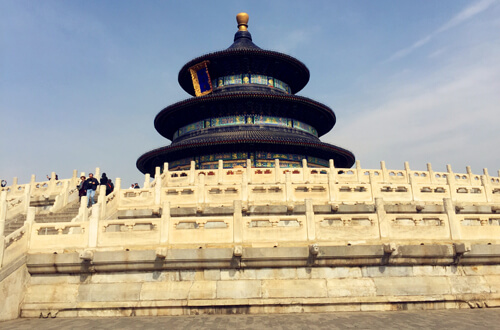
Temple of Heaven: Built in 1420 under the reign of the Yongle Emperor of the Ming Dynasty, the Temple of Heaven was the venue for annual ceremonies of prayer for good harvest by the emperors of the Ming and Qing dynasties.
The Ming Tombs in Beijing:The Ming Tombs house the mausoleums of 13 of the Ming Emperors, dating back to the fifteenth century. Three of the Ming Tombs are open to the public.
Xi'an City Wall in Xi’an:This is the largest, best preserved and oldest surviving ancient city wall in China, with a total length of 13.74 kilometers, a height of 12 meters and a top width of 12-14 meters.
Ming Xiaoling Mausoleum in Nanjing:The tomb of Hongwu Emperor, the first emperor of the Ming Dynasty. The elaborate layout of the numerous tomb structures in the Mingxiaoling mausoleum is a fine example of ancient China's royal tomb construction, which was greatly influenced by the traditional Chinese theory of geomantic omen on location.
Zhonghua Gate (Zhonghuamen Castle) in Nanjing:The most famous gate of the Nanjing City Wall. Although this section of the wall has been rebuilt and refurbished over the past half century, the layout is near identical to its dynasty era originations.
10. Qing Dynasty 清朝 (1644 – 1911 CE)
- Capital: Beijing
-
Major Achievements:
- The empire contained over 13 million square kilometers of territory; an area exceeded only by the Mongol Yuan dynasty. The empire’s population was around 400 million at its heyday. The Kangxi Emperor of Qing dynasty ordered the compilation of a dictionary of Chinese characters, which became known as Kangxi Zidian or Kangxi Dictionary. Published in 1716, the dictionary contains more than 47,000 characters.
- Printing was more fine-tuned for mass production. Private printing shops were abundant, circulating various texts and literature. Woodblock color printing also became more accessible, carrying a multitude of colors. Some of the most well-known Chinese novels were written during the Qing period, like Cao Xueqin’s A Dream in Red Mansions or The Story of the Stone, Wu Jingzi’s The Scholars and Li Ruzhen’s Flowers in the Mirror.
- What Can We Visit Now:
Summer Palace: First built in 1750, and largely destroyed in the war of 1860 and then restored on its original foundations in 1886 – the palace is a masterpiece of Chinese landscape garden design. The natural landscape of hills and open water is combined with artificial features such as pavilions, halls, palaces, temples and bridges to form a harmonious ensemble of outstanding aesthetic value.
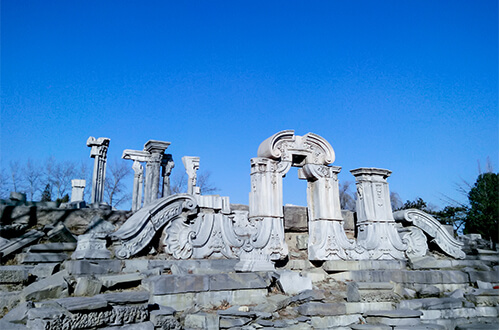
Ruins of the Yuanmingyuan (Old Summer Palace):The construction work began in early 1700 and went on over a period of 150 years. It was dubbed as the “garden of gardens” when it was finished. Yuanmingyuan contained hundreds of palaces, temples, libraries, theaters, pavilions, chapels, gazebos and galleries filled with priceless artworks, antiquities and personal possessions. But it was looted and set on fire by French and British troops during the Second Opium War (1860-1862).

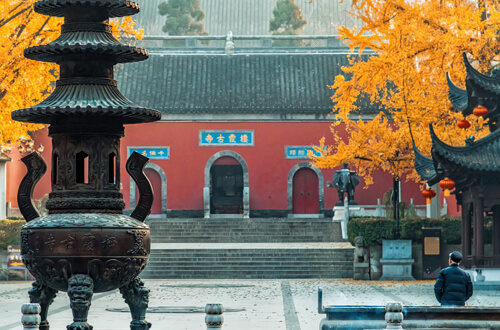 Ten Ancient Capitals of China
Ten Ancient Capitals of China 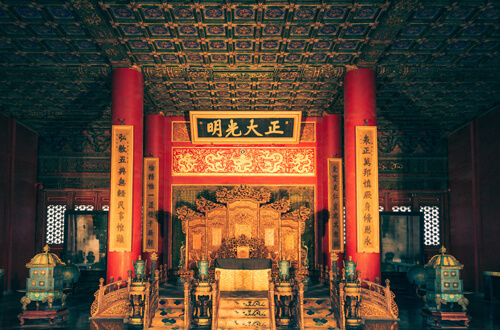 Top 10 Greatest Emperors
Top 10 Greatest Emperors 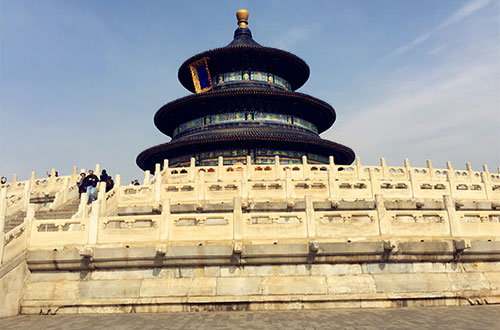 Top 10 Historical Sites in China
Top 10 Historical Sites in China 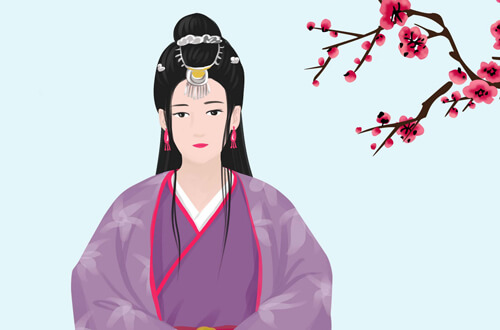 Famous Chinese Women in History
Famous Chinese Women in History